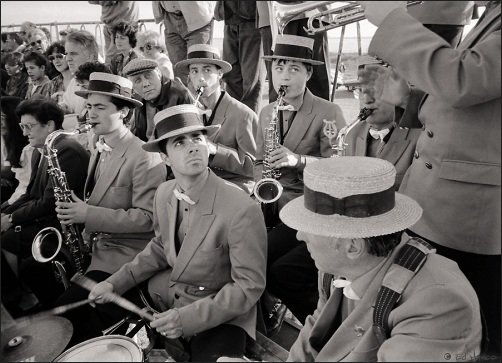(Temporarily pressing “Play.”) I started this blog in November 2007, when — like so many others — I was keenly anticipating the arrival of the up-to-then enigmatic DP1. I did a lot of reading, which resulted in a lot of writing, about what to expect when the camera arrived.
Then it arrived.
The story by now is well known. Image quality on the DP1 is outstanding (as expected), but other things are poor. For example, some people don’t like the build quality, and the menus are poorly designed. Then there’s the hotly debated issue of the fixed focal length 28mm (equivalent) lens, with its very slow f4 maximum aperture. Many people argue that if Sigma is going to insist on a prime (i.e., not zoom) lens, then at least make it a fast one.
Finally, there is poor performance in terms of various lag times (shutter lag, auto-focus lag, etc.). That was the deal breaker for me. I cannot abide a slow, unresponsive camera.
Given that a lot of people were talking about the DP1 as a good camera for street photography, slow performance was a deal breaker for a lot of other people too. Some argue that by using all manual settings the camera is reasonably responsive, and I’m inclined to believe it. But still, all that poorness, combined with the very high price (almost $1000 in Canada) meant I abandoned any plans to get a DP1. After all that hype, the response at launch time was lukewarm at best. Reviews were generally bad, and sales were disappointing.
Around that time, I started appreciating the camera I was already using; the somewhat flawed but otherwise delightful Lumix DMC-LX2 (or simply LX2 for short). There had been rumors of an LX3 in the works, so my DP1 anticipation shifted to LX3 anticipation.
Finally, in late summer 2008, the LX3 was announced and then released. What really got my attention was how much Panasonic (the makers of the Lumix brand) were “borrowing” from the DP1’s hype to promote the new camera. It was very clear that the central focus of the LX3 marketing effort was the message “Disappointed by the DP1? The LX3 hits where the DP1 misses.”
Let’s recap the DP1 hype, and compare it with the LX3 message:
- The DP1 promised outstanding image quality based on a large sensor that used fewer (but more sensitive) pixels.
- The LX3 was heavily promoted for its new, larger sensor — one that uses fewer pixels than its predecessor. Reviewers went mad over the “less is more” design. This despite the fact that upon closer reading, the new sensor is inconsequentially larger than the previous one — and certainly a lot smaller than the DP1’s — but the fine points were missed by most people. All they heard was “bigger sensor, fewer pixels, just like the DP1!”
- The DP1 promised a return to rangefinder-style street shooting via its optional clip-on optical viewfinder.
- The LX3 also delivered an optional clip-on optical viewfinder.
- The DP1 promised a top quality wide angle (28mm equivalent) lens, and insisted its slow f4 maximum aperture was not an issue.
- The LX3 delivered a top quality Leica lens that was even wider (24mm equivalent), zoomed “3X,” and most impressively, had a maximum aperture of f2.0 — an unprecedented speed in a compact digital camera.
The bottom line was “we do all the things the DP1 was supposed to do, plus we do the things the DP1 cannot do, at about half the price.” (The LX3 retails at about $550 in Canada.) The response was overwhelming — literally. Panasonic has had trouble keeping up with demand. A plethora of rave reviews has lead to shortages of the camera in Canada, the U.S., and parts of Europe. Stores can’t keep them on the shelves.
If you read my other blog (and look at my photo blog) you’ll know that I bought an LX3 — and I love it. Lag times are acceptable (and, as with the DP1, I can make them disappear almost completely by using manual settings), and although it doesn’t use a Foveon sensor, I’m perfectly happy with the image quality — which improves significantly on its predecessor.

I’m loving my LX3! |
Around the time that the LX3 came out, Sigma announced that the DP2 was in development. Changes we know we’ll see are a less wide angle lens (supposedly in the range of 40mm equivalent) but faster — f2.8. Apparently there will be modifications to the menus, as well as performance enhancements.
The question I have is this: has Sigma paid any attention to how Panasonic used their failure to enhance their success? And will the improvements in the DP2 reflect that knowledge?
Will Sigma step up and not just correct their mistakes but make the DP2 — and the DP2’s message — so kick-assingly awesome as to steal back some of their own hype? They could start by hammering away at the LX3’s biggest shortcoming; its lack of availability. After all, showing up is at least half the battle.
We’re on the verge of the Photo Marketing Association’s big PMA 2009 trade show. Will the DP2 make an appearance? Will it step up to the DP1’s failings? Will it make a dent in the LX3 demand?






Recent comments…